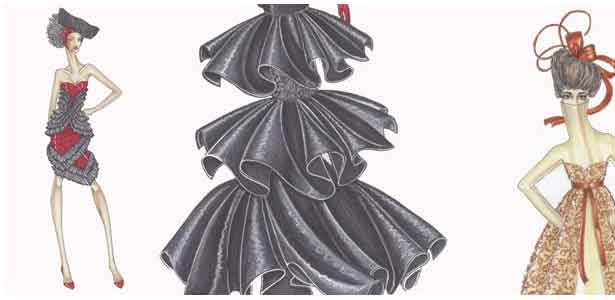
by Katrina Kuntz
My first question, “Can drawing be defined within contemporary artistic practices?” was answered with polite laughter and an exchange of glances. The process of definition is not an easy task, and the six SAIC students curating Drawn to Drawing acknowledged this in a March 30 interview. “Essentially, that is what we are addressing,” curator Laura Smith stated. “Drawing is a constantly malleable practice.” The other five curators ö Lindsay Bosch, Claire Chak, Jennifer Gheith, Ezara Hoffman, and James Kao ö agreed. In fact, they were less concerned with defining the process of drawing and more interested in presenting works created by artists as the experience of drawing.
Bosch admitted that she and the other curators were most attracted to emerging artists “engaged with the activity” of drawing. It became obvious to the six that the creative process of drawing can no longer be limited to traditional works on paper. The more experimental approaches exhibited in Drawn to Drawing are the curatorsâ attempt to expand the limits of drawing to include works in any number of media. With over a hundred entries to consider and their own individual perceptions about drawing to negotiate, the curators faced not only the problem of where to begin but, as Kao pointed out, “Where does this go?”
Selected through a separate application and interview process, three art history grads, one painting and drawing junior, one visual communications senior, and one post-baccalaureate painting and drawing student began meeting as curators with their curatorial advisors; SAIC Faculty in Painting and Drawing Candida Alvarez and Betty Rymer Gallery Director, Trevor Martin, in early November to discuss their own ideas surrounding their experiences with drawing.
Before Drawn to Drawing submissions could be juried, the curators first discussed well-known artists, using examples of widely-recognized works as tools of communication to convey what drawing means to each one of them. The very intense selection process included marathon sessions of slide viewing and debate as well as several studio visits. “Candida and Trevor really kept us on track,” said Chak. The advisers helped to stimulate discussion and introduced the curatorial team to alternative possibilities. By the middle of December, thirty artists were selected for the exhibition. Most of these artists are associated with the school as faculty, alumni, or current students. Those who are not are based in New York, Kentucky, Texas, and California, and are representative of the various modes of drawing currently practiced.
As one of those hundred applicants who was not selected to participate in Drawn to Drawing , I was curious as to what criteria were used to jury the submissions. I certainly had a hard enough time convincing myself, let alone six curators and their two advisors, that the works I was submitting were drawings, not paintings. Especially when work is created in a medium not traditionally associated with the process of drawing, I wondered how influential was the artistâs statement in the selection process? The curators assured me that although the artistâs statement was consulted to clarify an artistâs particular approach, it was not necessarily the determining factor in choosing work.
The curatorial team noticed other trends emerging in the drawings selected for the exhibition. Current issues such as mapping and the relationship between drawing and painting were evident. What is central to the exhibition, however, is the notion of line, whether the actual mark making or narration. Smith, in particular, was aware of drawing used to address ideas of control and power. She points to the work of Chicago-based artist and SAIC 2002 graduate Ben Chickadel as the expression of identity and power. Kao and the other curators commented on the tendency of artists, such as SAIC undergraduate Hector Arse-Espasas, to approach the act of drawing as a performance. Yet, there are artists like SAIC grad Rebecca Carter, whose “Drawing Machine” is viewed as definitive of the exhibition, who continue to focus on drawing as a controlled process.
I assumed that it would be difficult to reach a consensus when working with so many curators, but that was not the case. “We are all very passionate about drawing,” Hoffman informed me, “but all the (curatorial) decisions were unanimous.” Nevertheless, I persisted, it is quite unusual to have this number of voices weighing in equally. “There were many debates,” Bosch concurred, but she notes how her opinion was positively swayed by those works and artists she learned most about through the open and unrestricted process of deliberation.. All six students felt encouraged to explore the possibilities and problems posed by drawing. When asked how this experience affected her own artistic practices or writing, Gheith stated, “My sensitivity has changed but my original ideas about drawing havenât.” She continued, “I would encourage all students to participate in this kind of experience, to work with other artists.” The enthusiasm of the curators is apparent. They all speak of a new respect for the “organic-ness” of the artistic process and hope viewers of Drawn to Drawing , above all, engage in a similar kind of dialogue.
Drawn to Drawing
from April 29 to July 1
at the Betty Rymer Gallery
280 S. Columbus Drive
Video still from Stuart Keeler
Artwork by Teena McClelland
Artwork by Jelena Berenc
May 2005







